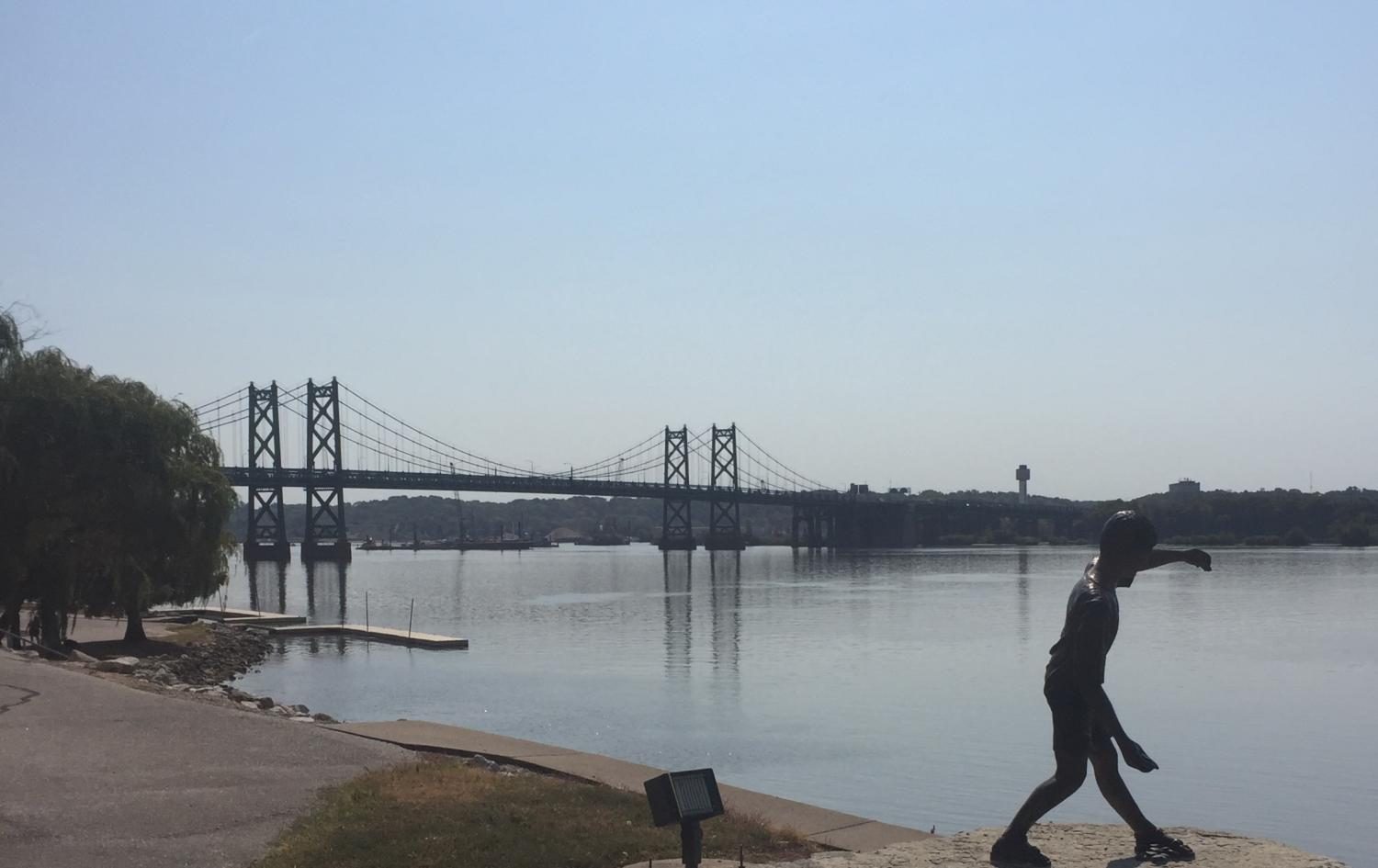Every day, hundreds of cars and trucks zip across the Mississippi on the I-74 Bridge. The green suspension bridge connecting Iowa and Illinois has been an icon in the Quad Cities since it was built in the mid-twentieth century. However, in an estimated four years, traffic will be fed through a new bridge that will take the place of the suspension bridge locals have come to love and hate.
There are several significant problems with the current I-74 bridge that have forged the need for a new link between the two states. The Iowa Department of Transportation says the bridge is “functionally obsolete, at the end of its design life and in the need of replacement.” The absence of a pedestrian and bike lane is also a source of frustration for some. Additionally, as many who routinely cross the Mississippi River via the I-74 suspension bridge know well, traffic jams are not uncommon. Almost constant repair work, lane closures and the lack of breakdown lanes on the narrow bridge contribute to these jams, as well as the frustration of commuters.
Fortunately, these issues will be addressed in the estimated $1.2 billion project; specifically, traffic flow will be significantly increased with the new bridge. According to the 2040 Quad Cities Area Long Range Transportation Plan, the bridge boasting four lanes going each direction will be able to accommodate a predicted increased flow of traffic from 70,800 vehicles per day in 2008 to 94,800 in the year 2040.
The promise of a solution to the problems is encouraging for Delaney Evans, who crosses the bridge to and from Illinois on average two times a day to get to rowing practice in Moline; she often is caught up in slow traffic. “Due to heavy traffic and constant construction, I can honestly say I’ve spent up to 30 minutes on some days trying to cross the river,” Evans said. “Although I will probably be in college when the bridge is finished, I know it will be a huge improvement and time save for everyone that uses the bridge daily”. Evans will be one of many who will look forward to the convenience of the new bridge.
But before any work could begin on this three-phase construction plan that will positively alter the lives of drivers in the Quad Cities area and beyond, a problem that lied below the Mississippi’s muddy waters had to be addressed. Approximately $2.4 million was invested in saving an endangered mussel species cluster that would have been otherwise wiped out with the new plans.
While mussels were being saved, Moline and Bettendorf were in the process of preparing their downtowns for the construction of the new bridge. Businesses were relocated and buildings were torn down; roads were diverted as well. Currently, workers on the river are drilling into the river bed where the piers for the new bridge will soon stand.
This is an exciting time of change for the Quad Cities. While construction efforts and the current narrow bridge may hinder day-to-day traffic, in an estimated four years, it will be realized that all minor inconveniences were worth it when drivers and walkers alike can easily make the trip from one state to another on the shiny new bridge.









